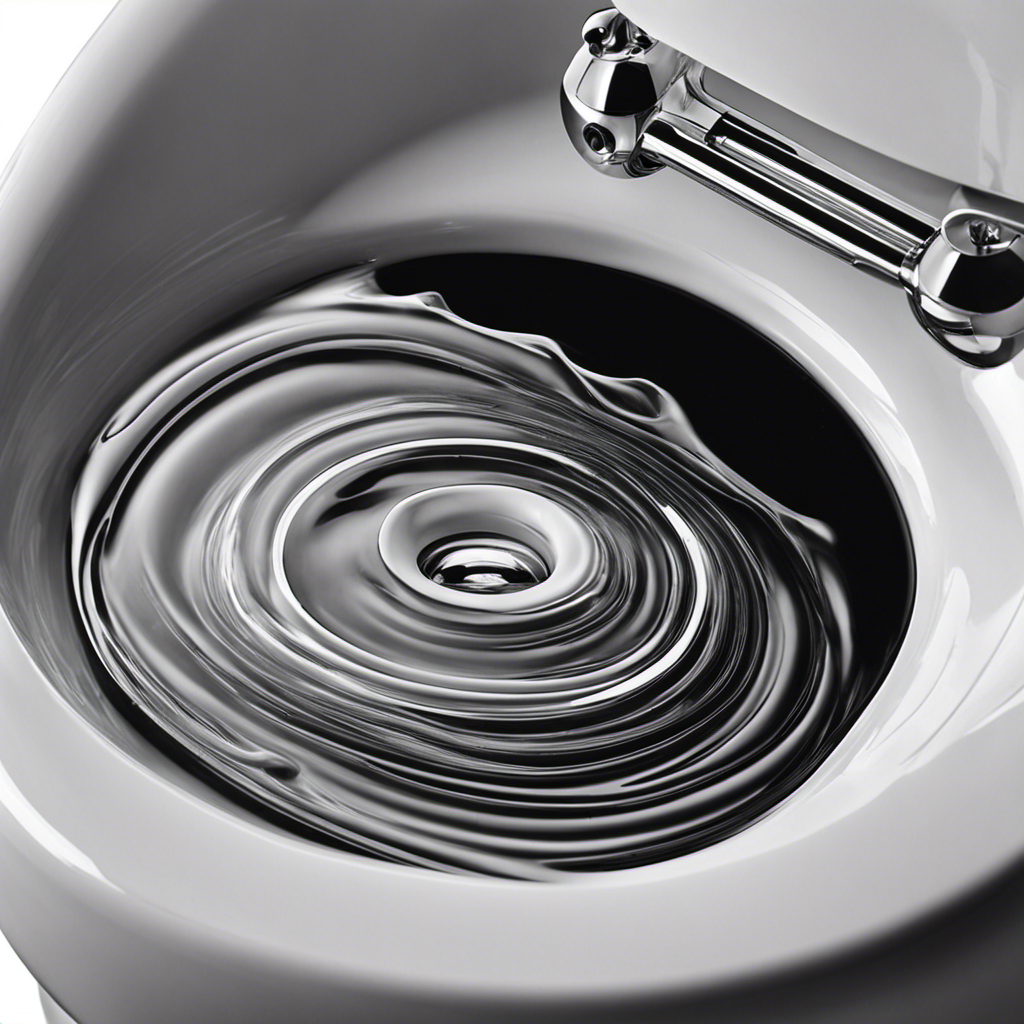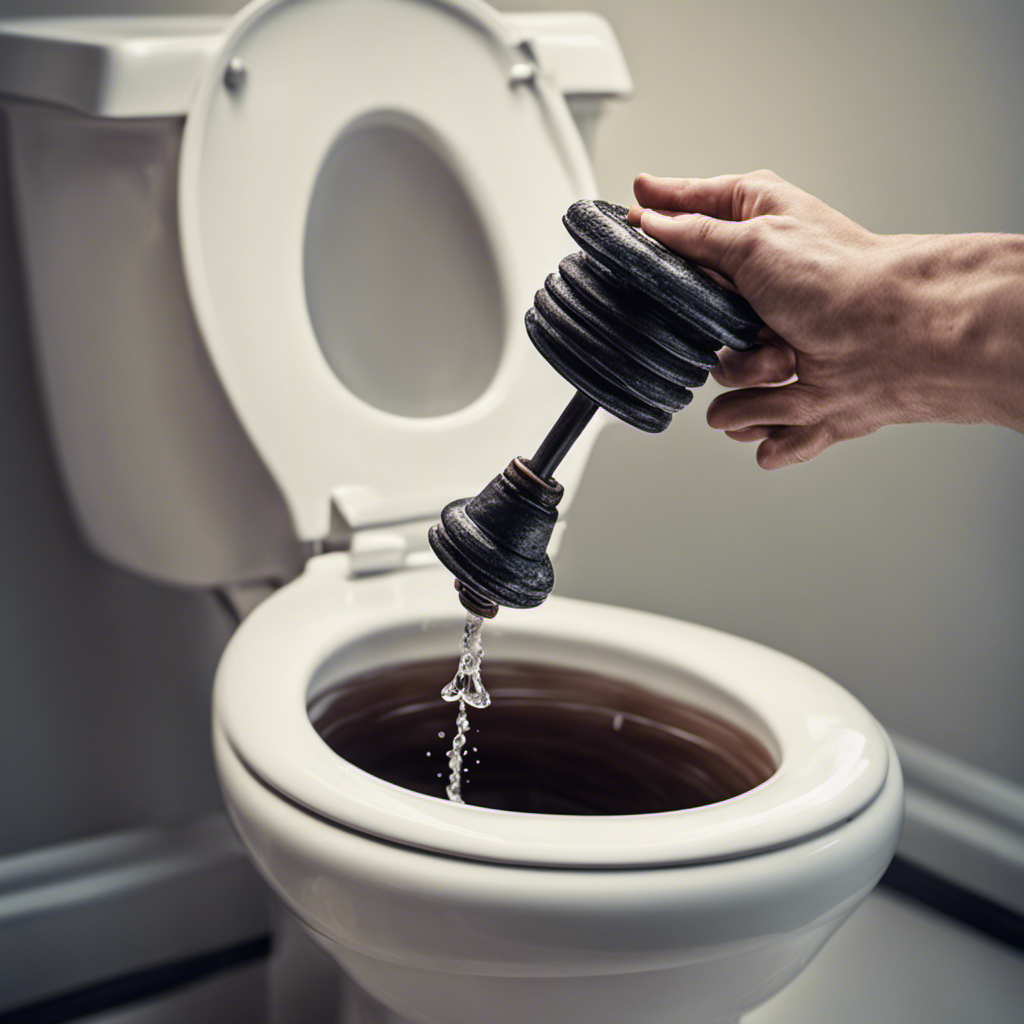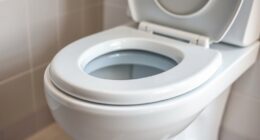Have you ever wondered why your toilet flushes twice? It can be frustrating, especially when you’re trying to conserve water.
Well, let me shed some light on this issue for you. There are several common reasons why toilets flush twice, and understanding them can help you solve the problem.
From issues with the flapper to clogged drain lines, I’ll guide you through the technical aspects and provide precise solutions to ensure your toilet flushes efficiently with just one flush.
Key Takeaways
- Double flushing can occur due to various reasons such as partial clogs, malfunctioning flapper valves, insufficient water pressure, inadequate water level, and blockages in the drain lines.
- Maintaining the proper water level in the toilet bowl is crucial for efficient flushing, and recommended water levels may vary for different toilet models.
- Flapper issues, such as damaged or worn-out flappers, can cause multiple flushes by preventing a proper seal and allowing water to leak into the bowl.
- Clogged drain lines can hinder water flow during flushing, and regular plumbing maintenance is essential to prevent debris accumulation and clogs.
Common Reasons for a Double Flush
One common reason why your toilet flushes twice is because there may be a partial clog in the pipes. When there is a partial clog, the water flow from the tank to the bowl is restricted, causing the toilet to flush incompletely. This can result in the need for a second flush to fully clear the bowl.
Another possible reason for a double flush is a toilet tank malfunction. If the flapper valve, which controls the release of water from the tank to the bowl, is not functioning properly, it may not allow enough water to enter the bowl during the flush.
Additionally, water pressure problems can also lead to a double flush. Insufficient water pressure can prevent an effective flush and require a second attempt to remove waste completely.
Understanding Toilet Water Levels
To understand toilet water levels, it’s important to note that the water level in a toilet bowl should be at a certain height to ensure proper flushing. The ideal water level is typically marked on the inside of the toilet tank. Maintaining the correct water level is crucial for efficient flushing and preventing issues like toilet tank overflow or inadequate toilet water pressure.
To help you understand the importance of proper water levels, here is a table outlining the recommended water levels for different toilet models:
| Toilet Model | Recommended Water Level |
|---|---|
| Standard | 1.5 to 2 inches |
| Low-flow | 1 to 1.5 inches |
| Dual-flush | 0.5 to 1 inch |
How Flapper Issues Can Cause Multiple Flushes
Maintaining proper water levels in your toilet is crucial, as flapper issues can lead to multiple flushes.
The toilet flapper is a rubber valve located at the bottom of the toilet tank. Its main function is to seal the tank and prevent water from constantly flowing into the bowl.
However, if the flapper is damaged or worn out, it may not create a proper seal, causing water to continuously leak into the bowl. This constant flow of water triggers the toilet to flush, resulting in multiple flushes.
To fix this issue, you will need to replace the flapper. Simply turn off the water supply, remove the old flapper, and install the new one, ensuring a tight seal.
This will restore the proper water levels and prevent unnecessary flushes.
The Role of Clogged Drain Lines in Double Flushing
When drain lines become clogged, it can contribute to the occurrence of double flushing. Clogged pipes can prevent proper water flow, causing the toilet to not flush completely in one go. This issue is often a result of debris, such as hair, soap scum, or mineral buildup, accumulating in the drain lines over time. Regular plumbing maintenance is crucial to prevent clogged drain lines and ensure the proper functioning of your toilet. To help you understand the importance of maintaining your plumbing system, here is a table outlining the potential consequences of neglecting plumbing maintenance:
| Consequences of Neglecting Plumbing Maintenance |
|---|
| Increased risk of clogged drain lines |
| Frequent occurrence of double flushing |
| Higher likelihood of toilet backups |
Solving Toilet Flush Problems With Adjustments
You can solve toilet flush problems by making simple adjustments to the water level in the tank. Toilet flush mechanisms rely on the proper amount of water to create enough pressure for an efficient flush.
If the water level is too low, it can result in a weak flush that may require multiple attempts. Conversely, if the water level is too high, it can cause an excessive amount of water to flow into the bowl, wasting water and potentially causing overflow issues.
Adjusting the water level in the tank can help optimize the water pressure and ensure efficient flushing. By finding the right balance, you can improve the flushing efficiency of your toilet and prevent the need for multiple flushes.
Frequently Asked Questions
How Often Should I Clean My Toilet to Prevent Double Flushing?
I clean my toilet once a week to prevent double flushing. Regular cleaning helps to remove any build-up that can cause clogs. Additionally, knowing how to unclog a toilet and being aware of common causes of double flushing can also help prevent it.
Can a Double Flush Cause Damage to My Toilet?
A double flush can strain the toilet mechanism and potentially cause damage over time. To fix a double flush toilet, check the water level, adjust the flapper, or clean the flush valve.
What Is the Average Cost to Repair a Toilet That Double Flushes?
The average cost to repair a toilet that double flushes can vary depending on the specific issue, but common causes include a faulty flapper valve or a problem with the fill valve.
Are There Any Health Risks Associated With a Toilet That Double Flushes?
Double flushing a toilet occasionally can be a nuisance, but it doesn’t pose any major health risks. However, it’s important to address the issue to prevent water waste and potential damage. Regular toilet maintenance and troubleshooting can help resolve the problem.
Can a Double Flush Be a Sign of a Larger Plumbing Issue in My Home?
A double flush can indicate a larger plumbing issue. It’s crucial to perform regular toilet maintenance and troubleshoot any toilet issues promptly. Ignoring these signs could lead to costly repairs down the line.
Conclusion
In conclusion, discovering why your toilet flushes twice can be like uncovering the hidden layers of a mystery novel. Just as a skilled detective follows the clues, we have explored common reasons such as water levels, flapper issues, and clogged drain lines.
By making adjustments and addressing these problems, you can solve the enigma of the double flush. So, dear reader, let us embark on this toilet troubleshooting journey with determination and precision, for a well-functioning toilet awaits us at the end.










